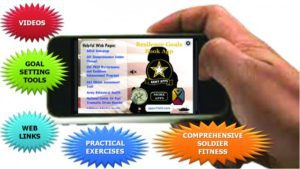Bouncing Back From Trauma
By AMERICAN PSYCHOLOGICAL ASSOCIATION
Resilience is the process of adapting well in the face of adversity, trauma, tragedy, threats, or even significant sources of stress — such as family and relationship problems, serious health problems, or workplace and financial stressors. It means “bouncing back” from difficult experiences.
Research has shown that resilience is ordinary, not extraordinary. People commonly demonstrate resilience. One example is the response of many Americans to the September 11, 2001 terrorist attacks and individuals’ efforts to rebuild their lives.
Being resilient does not mean that a person doesn’t experience difficulty or distress. Emotional pain and sadness are common in people who have suffered major adversity or trauma in their lives. In fact, the road to resilience is likely to involve considerable emotional distress.
Resilience is not a trait that people either have or do not have. It involves behaviors, thoughts, and actions that can be learned and developed in anyone
There’s no doubt that resilience is emerging as a necessary ability, not only in the context of a person’s military career, but also as an invaluable tool throughout an individual’s life. The American Psychology Association has studied resilience closely since 9/11 and has published a 10-point guide to developing individual resilience. A resilient person is not only able to handle such experiences in the moment, but also bounce back afterward:
1. Develop supportive and caring relationships at home, among friends and colleagues. Accept help and support, and help others when they need it.
2. Remember that some crises are beyond your control. You can’t change events, but you can change the way you interpret and react to them. Try to accept this and look ahead.
3. Accept that change is part of life and that you will have to adapt to changing circumstances.
4. Set some realistic goals and take regular small steps towards achieving them. Ask yourself, “What’s the one thing I can accomplish today?”, rather than focusing on the overarching goal.
5. Be decisive. Do as much as you can rather than avoiding problems and hoping they will go away.
6. Try to understand your own experiences of dealing with loss, hardship or emotional problems. Appreciate what you have learned from these events.
7. Develop a positive view about yourself and be confident in your strengths and abilities
8. Try to take a longer-term perspective and don’t blow the significance of the event out of proportion.
9. Stay hopeful and optimistic. Visualize what you want, rather than worrying about what you fear.
10. Look after yourself and your health, keep fit and take time out for relaxation and peace. This will give you the strength and balance to deal with difficult situations.
Goal Setting App Provides Resilience Building Tools
WASHINGTON (Army News Service) — “A lot of times we push off getting back to stuff because we can‟t get to it. The goal-setting now is right there in your pocket,” said Sam Rhodes, the action officer responsible for a mobile-phone app that sets resilience goals.
 The free app for iPhones and iPads, developed by Rhodes and a team at the Maneuver Center of Excellence, Fort Benning, Ga., and the Signal Center of Excellence at Fort Gordon, Ga., was released one month ago. It is the i-version of the Resilience Goals Book under the Comprehensive Soldier Fitness program. The app allows Apple users to set goals within their personal beliefs and then set up e-reminders to stay on top of them. It can be downloaded at http://www.apple.com/itunes/affiliates/download/.
The free app for iPhones and iPads, developed by Rhodes and a team at the Maneuver Center of Excellence, Fort Benning, Ga., and the Signal Center of Excellence at Fort Gordon, Ga., was released one month ago. It is the i-version of the Resilience Goals Book under the Comprehensive Soldier Fitness program. The app allows Apple users to set goals within their personal beliefs and then set up e-reminders to stay on top of them. It can be downloaded at http://www.apple.com/itunes/affiliates/download/.
Soldiers can also email what they tap out directly to first-line supervisors. “It’s the first thing a Soldier can help himself with,” Rhodes said of the App and setting goals. “I think it provides a high degree of structure that everyone needs — I found that I needed — as we return from war and prepare to go to war.”
Rhodes retired as a command sergeant major, with 30 months of a 32-month tour in combat, and was diagnosed with post-traumatic stress disorder, or PTSD, in 2005. Now he works for the Directorate of Training and Doctrine at Fort Benning.
He said goal-setting is the number one way to enhance Soldier performance, and people who know about the App have latched on to the approach. The hard-copy goal book has been out for more than a year and can be downloaded as PDF.
Design and development of the mobile application started in January. Rhodes explained the point of going the I-Pad and mobile-phone route. “I don‟t want to say we targeted younger Soldiers, but if younger Soldiers use something, the older generation of Soldiers — (ask) guess what we have to do? Just like email,” he said. The Resiliency App exhibits a trend toward the innovative use of existing resources to help Soldiers. At least, that is Rhodes‟ thinking.
A search in the App Store for “Goal Setting — Comprehensive Soldier Fitness” will turn up the Resiliency App on iPhones and iPads. The genuine App is represented by the CSF logo, with “Goal Setting” in yellow letters backed by an Army star.

